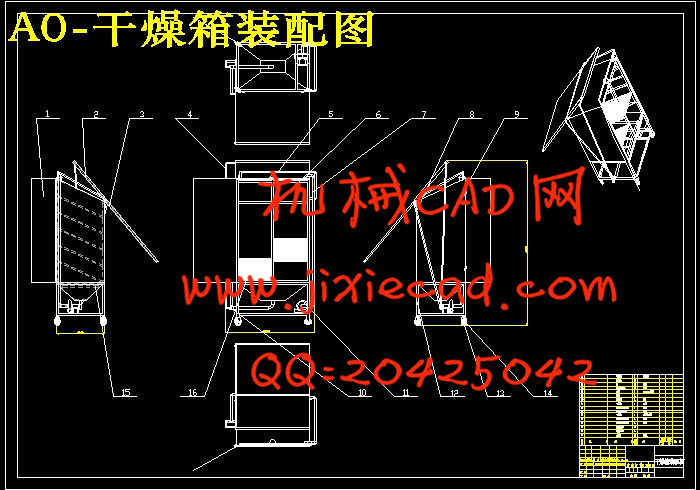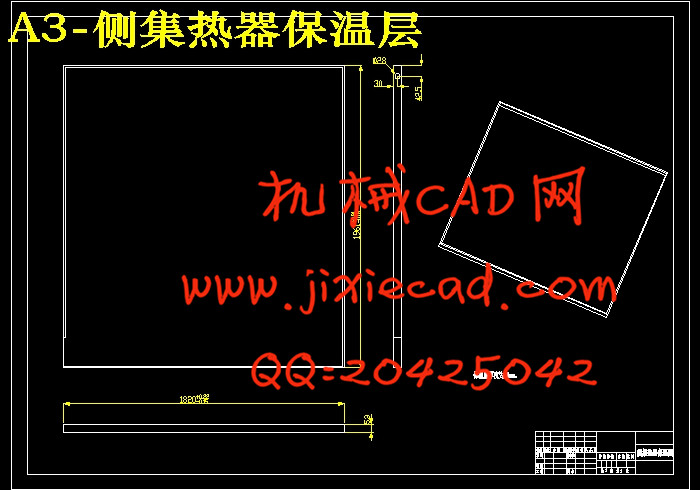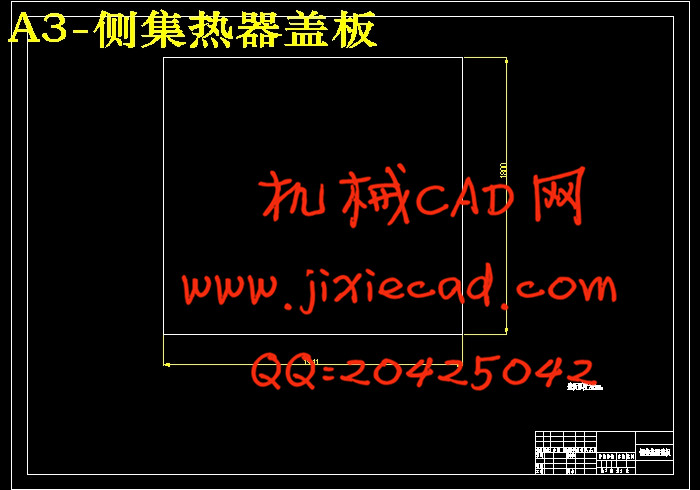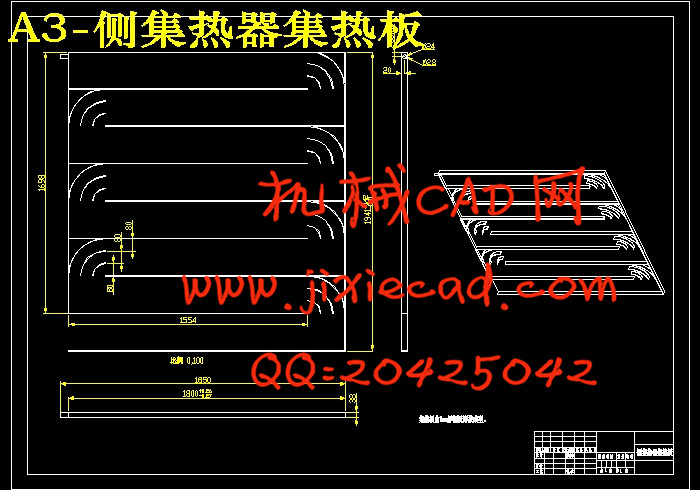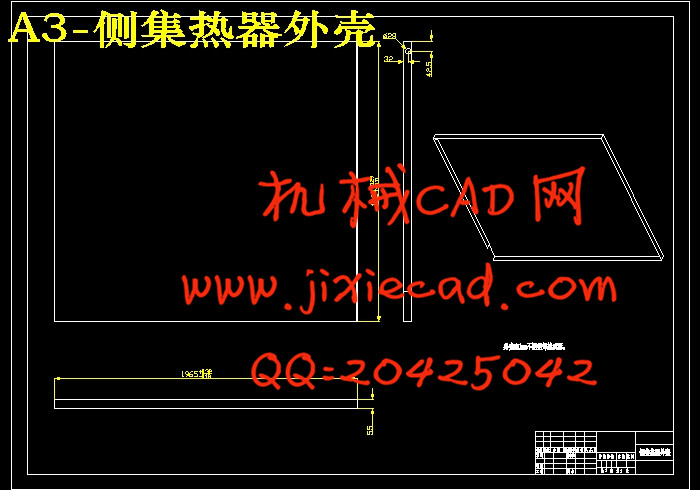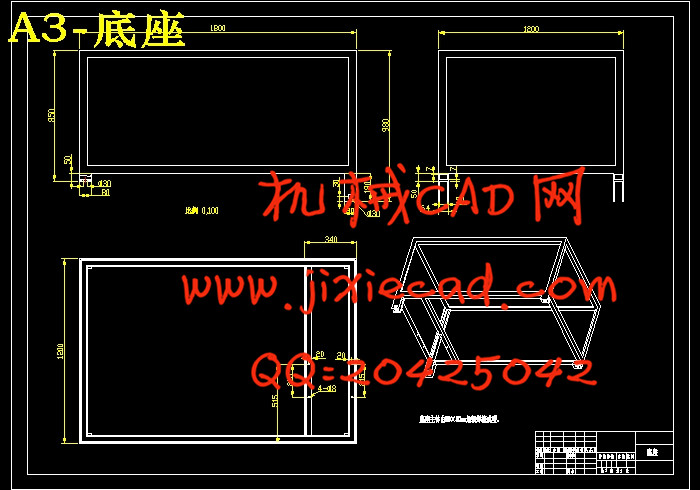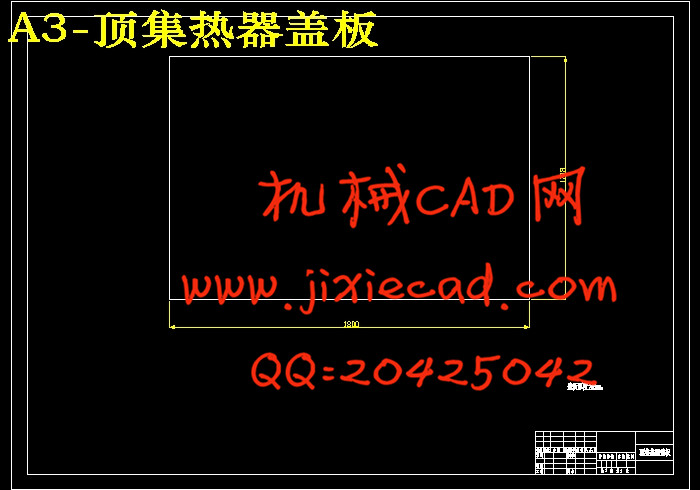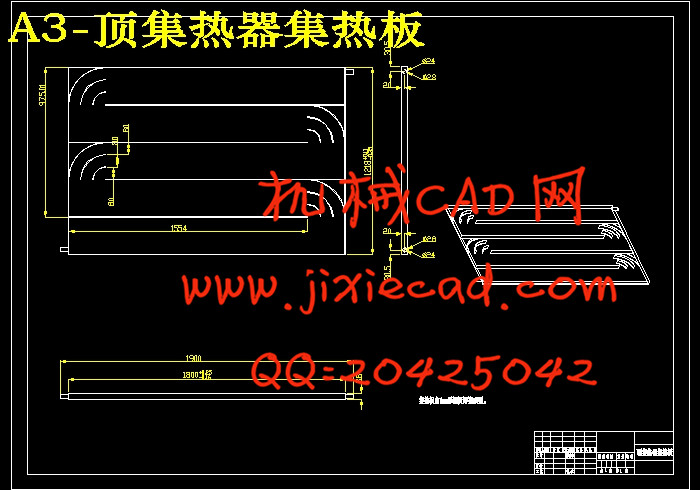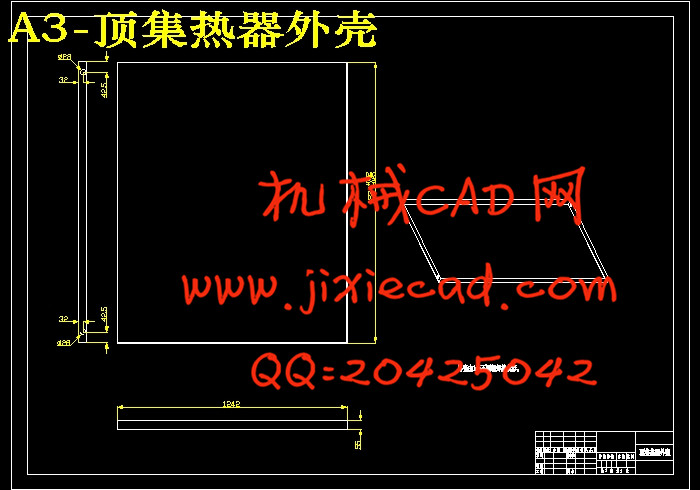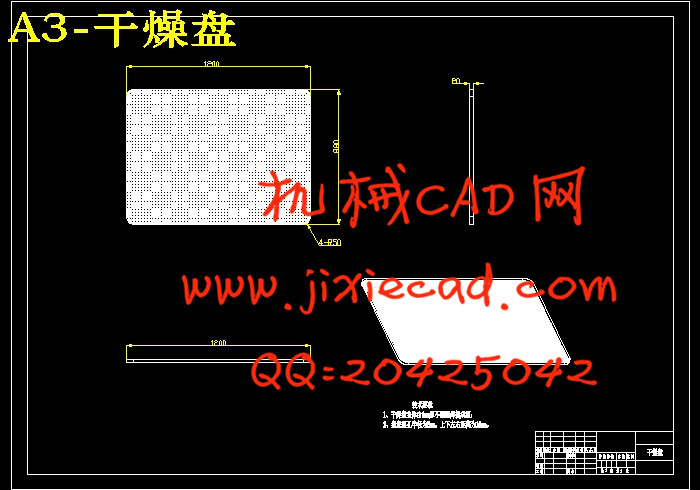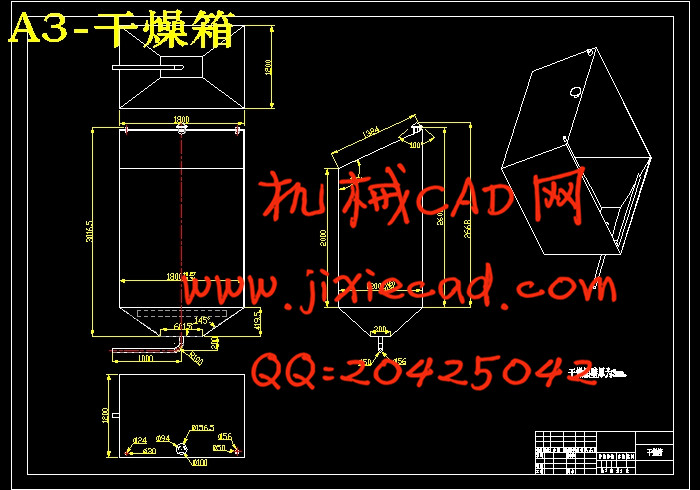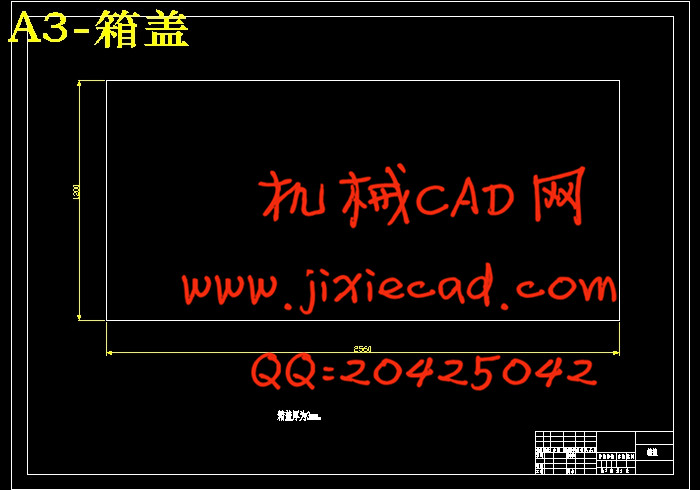设计简介
摘 要
我国农产品加工方法传统,农产品的干燥方式主要是热风干燥或者是自然晾晒,热风干燥耗能大,基本上是以能耗换取经济效益;而自然晾晒则面临着产品卫生的考验,也对人力、天气等因素依赖性强,难以扩大规模、连续性生产。我国太阳能资源非常丰富,同时农产品资源丰富,品质优良,而且当前的加工需求不断扩大,将农产品烘干后便于储存,有利于提高其经济价值,所以在当代能源危机与环境压力困扰不断加剧的局势下,探讨研究将太阳能利用在农产品的干燥中的作用极其重要。因此,为了将太阳能通过光热转化运用到农产品脱水干燥中,开发研制了太阳能果蔬干燥设备,以通过利用新能源缓解传统能源紧缺,同时创造农产品附加值。
太阳能果蔬干燥设备主要包括集热系统、干燥系统和控制系统三部分。集热系统由自行研发的太阳能集热器混联而成,集热系统将太阳能转化成空气中的热能,将收集的热风输入干燥系统。干燥系统是对物料进行烘干的场所,热风与物料进行换热。控制系统通过对风机、电动风口等执行部件的控制来调节干燥箱内的风速、风量及温度等因素,以达到不同物料所需要的不同干燥环境。
太阳能集热器是集热系统的核心部件。文中通过对比试验及热性能测试,取得集热器各部件的最佳结构参数及其热性能属性,给出了太阳能集热器出口温度与太阳能辐照度的关系式为 。吸热板为非渗透型平板式结构,为加强吸热板与空气的换热能力,空气通道设计成蛇形,流量为0.06kg/s,平均入口温度为22.16℃,平均辐照度为870.60W/m2时,集热器平均效率可达84.53%;日平均坏境温度17OC,上下通道空间比为2:1时,闷晒温度最高能达到87.6O℃,相比当时环境温度21.2℃提升66.4O℃。此太阳能空气集热器具有低成本,高效率的特点,结构简单,易于安装。
。吸热板为非渗透型平板式结构,为加强吸热板与空气的换热能力,空气通道设计成蛇形,流量为0.06kg/s,平均入口温度为22.16℃,平均辐照度为870.60W/m2时,集热器平均效率可达84.53%;日平均坏境温度17OC,上下通道空间比为2:1时,闷晒温度最高能达到87.6O℃,相比当时环境温度21.2℃提升66.4O℃。此太阳能空气集热器具有低成本,高效率的特点,结构简单,易于安装。
关键词:太阳能;果蔬干燥设备;设计
Abstract
The methods of agricultural product processing in China is traditional ,the mainly methods of drying agricultural product are heated-air drying and natural drying ,drying energy consumption is huge ,and the economic benefit basically exchange from energy consumption ;and natural drying is facing the test of food safe ,due to the factors such as human and weather ,enlarge the scale or continuously production still has difficult to complete .Solar energy resources are very rich in China ,and agricultural resources are rich ,and with good quality ,under the current processing demand expands unceasingly ,stocking agricultural produce after drying ,can improve its economic value ,so in the situation of contemporary energy crisis and environmental pressure troubled growing ,solar energy research will play a key role in the produce drying .Therefore ,in order to use solar energy through the solar-thermal transformation into the process of drying ,a scale of solar drying equipment is developed to produce dehydration with solar energy ,it can add value to agricultural produce by using new energy.
Solar fruit and vegetable drying equipment mainly include solar heating system ,drying system and control system three parts .Heating system is composed of several solar collector ,on purpose of transformation solar energy into hot thermal energy in air ,then in put the hot air to the drying system .Drying system is the place of putting materials ,hot air transform heat with materials in this system .Control system based on perform components such as fan and electric lever to adjust the wind speed ,air volume ,temperature and other factors in drying room ,to achieve the need of different material in different dry environment.
In order to utilize solar energy in agriculture products dehydrating drying via solar-thermal transformation ,a kind of flat-plate solar air collector was designed .The optimum structures of collector were presented through series of contrast tests .After performance test on the collector ,the equation between air temperature at inlet and outlet and irradiance was obtained .The efficiency of this collector was as high as 84.53%,while the absorber was lateral corrugated ,the rate of flow was 0.06kg/s ,the average inlet temperature was 22.16oC,and the average irradiance was 870.60w/m2;when the average daily environment temperature was 17oC,and the top and bottom passageway spacing ratio was 2:1,the highest temperature in the collector was 87.6oC,risen by 66.4oC compared with the ambient temperature .The collector has the advantages of low cost , high efficiency and simple structure ,which can be used in fields of agricultural products drying dehumidifying.
Keywords :Solar energy ;Fruits and vegetable Dryer ;Design
目 录
摘 要 1
Abstract 2
目 录 4
第一章 绪论 6
1.1农产品干燥技术进展 6
1.1.1自然日晒干燥 6
1.1.2热风干燥 7
1.1.3真空冷冻干燥 7
1.1.4微波干燥技术 7
1.1.5太阳能干燥技术 8
1.1.6其它干燥技术的应用 8
1.2太阳能干燥设备的研究现状 9
1.2.1自然对流型干燥设备 9
1.2.2强迫对流型干燥设备 9
1.3本课题研究的主要目的、意义 12
第二章 太阳能干燥装置设计 13
2.1太阳能干燥原理 13
2.2太阳能干燥设备设计思路 13
2.2.1传统干燥方式优势及不足 14
2.2.2太阳能干燥设备设计思路 14
2.3太阳能干燥装置物料衡算 15
2.3.1干燥介质性质 15
2.3.2 除湿量的计算 18
2.3.3 空气消耗量的计算 18
2.4太阳能干燥装置能量分析 19
2.4.1 总能量平衡 19
2.4.2 物料内能变化和排湿消耗能量 19
2.4.3 系统热损失 20
2.4.4 干燥效率与系统总效率 20
2.5太阳能干燥装置的设计目标及原理 20
2.5.1设计目标 20
2.5.2太阳能干燥设备工作原理 21
2.6整体式干燥箱设计 21
2.6.1整体式干燥箱的结构 21
2.6.2集热器高度角转动示意图 22
2.6.3集热器方位角转动示意图 23
2.6.4转向结构 24
2.6.5太阳能集热器的设计 24
2.6.6干燥室设计 27
2.6.7小型太阳能干燥设备参数及材料选定 29
2.7控制系统 30
2.7.1温度控制 30
2.7.2流量控制 31
2.7.3时间控制 31
2.8本章小结 31
第三章 结论和展望 33
致 谢 36
参考文献 37
我国农产品加工方法传统,农产品的干燥方式主要是热风干燥或者是自然晾晒,热风干燥耗能大,基本上是以能耗换取经济效益;而自然晾晒则面临着产品卫生的考验,也对人力、天气等因素依赖性强,难以扩大规模、连续性生产。我国太阳能资源非常丰富,同时农产品资源丰富,品质优良,而且当前的加工需求不断扩大,将农产品烘干后便于储存,有利于提高其经济价值,所以在当代能源危机与环境压力困扰不断加剧的局势下,探讨研究将太阳能利用在农产品的干燥中的作用极其重要。因此,为了将太阳能通过光热转化运用到农产品脱水干燥中,开发研制了太阳能果蔬干燥设备,以通过利用新能源缓解传统能源紧缺,同时创造农产品附加值。
太阳能果蔬干燥设备主要包括集热系统、干燥系统和控制系统三部分。集热系统由自行研发的太阳能集热器混联而成,集热系统将太阳能转化成空气中的热能,将收集的热风输入干燥系统。干燥系统是对物料进行烘干的场所,热风与物料进行换热。控制系统通过对风机、电动风口等执行部件的控制来调节干燥箱内的风速、风量及温度等因素,以达到不同物料所需要的不同干燥环境。
太阳能集热器是集热系统的核心部件。文中通过对比试验及热性能测试,取得集热器各部件的最佳结构参数及其热性能属性,给出了太阳能集热器出口温度与太阳能辐照度的关系式为
关键词:太阳能;果蔬干燥设备;设计
Abstract
The methods of agricultural product processing in China is traditional ,the mainly methods of drying agricultural product are heated-air drying and natural drying ,drying energy consumption is huge ,and the economic benefit basically exchange from energy consumption ;and natural drying is facing the test of food safe ,due to the factors such as human and weather ,enlarge the scale or continuously production still has difficult to complete .Solar energy resources are very rich in China ,and agricultural resources are rich ,and with good quality ,under the current processing demand expands unceasingly ,stocking agricultural produce after drying ,can improve its economic value ,so in the situation of contemporary energy crisis and environmental pressure troubled growing ,solar energy research will play a key role in the produce drying .Therefore ,in order to use solar energy through the solar-thermal transformation into the process of drying ,a scale of solar drying equipment is developed to produce dehydration with solar energy ,it can add value to agricultural produce by using new energy.
Solar fruit and vegetable drying equipment mainly include solar heating system ,drying system and control system three parts .Heating system is composed of several solar collector ,on purpose of transformation solar energy into hot thermal energy in air ,then in put the hot air to the drying system .Drying system is the place of putting materials ,hot air transform heat with materials in this system .Control system based on perform components such as fan and electric lever to adjust the wind speed ,air volume ,temperature and other factors in drying room ,to achieve the need of different material in different dry environment.
In order to utilize solar energy in agriculture products dehydrating drying via solar-thermal transformation ,a kind of flat-plate solar air collector was designed .The optimum structures of collector were presented through series of contrast tests .After performance test on the collector ,the equation between air temperature at inlet and outlet and irradiance was obtained .The efficiency of this collector was as high as 84.53%,while the absorber was lateral corrugated ,the rate of flow was 0.06kg/s ,the average inlet temperature was 22.16oC,and the average irradiance was 870.60w/m2;when the average daily environment temperature was 17oC,and the top and bottom passageway spacing ratio was 2:1,the highest temperature in the collector was 87.6oC,risen by 66.4oC compared with the ambient temperature .The collector has the advantages of low cost , high efficiency and simple structure ,which can be used in fields of agricultural products drying dehumidifying.
Keywords :Solar energy ;Fruits and vegetable Dryer ;Design
目 录
摘 要 1
Abstract 2
目 录 4
第一章 绪论 6
1.1农产品干燥技术进展 6
1.1.1自然日晒干燥 6
1.1.2热风干燥 7
1.1.3真空冷冻干燥 7
1.1.4微波干燥技术 7
1.1.5太阳能干燥技术 8
1.1.6其它干燥技术的应用 8
1.2太阳能干燥设备的研究现状 9
1.2.1自然对流型干燥设备 9
1.2.2强迫对流型干燥设备 9
1.3本课题研究的主要目的、意义 12
第二章 太阳能干燥装置设计 13
2.1太阳能干燥原理 13
2.2太阳能干燥设备设计思路 13
2.2.1传统干燥方式优势及不足 14
2.2.2太阳能干燥设备设计思路 14
2.3太阳能干燥装置物料衡算 15
2.3.1干燥介质性质 15
2.3.2 除湿量的计算 18
2.3.3 空气消耗量的计算 18
2.4太阳能干燥装置能量分析 19
2.4.1 总能量平衡 19
2.4.2 物料内能变化和排湿消耗能量 19
2.4.3 系统热损失 20
2.4.4 干燥效率与系统总效率 20
2.5太阳能干燥装置的设计目标及原理 20
2.5.1设计目标 20
2.5.2太阳能干燥设备工作原理 21
2.6整体式干燥箱设计 21
2.6.1整体式干燥箱的结构 21
2.6.2集热器高度角转动示意图 22
2.6.3集热器方位角转动示意图 23
2.6.4转向结构 24
2.6.5太阳能集热器的设计 24
2.6.6干燥室设计 27
2.6.7小型太阳能干燥设备参数及材料选定 29
2.7控制系统 30
2.7.1温度控制 30
2.7.2流量控制 31
2.7.3时间控制 31
2.8本章小结 31
第三章 结论和展望 33
致 谢 36
参考文献 37


